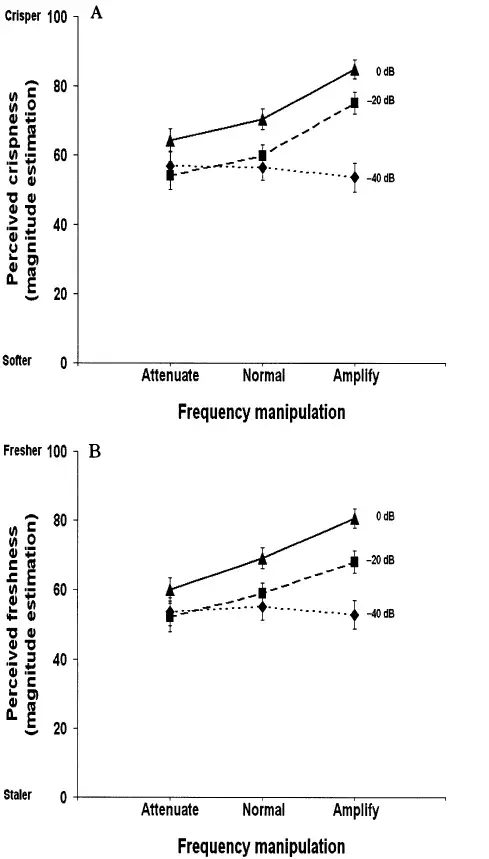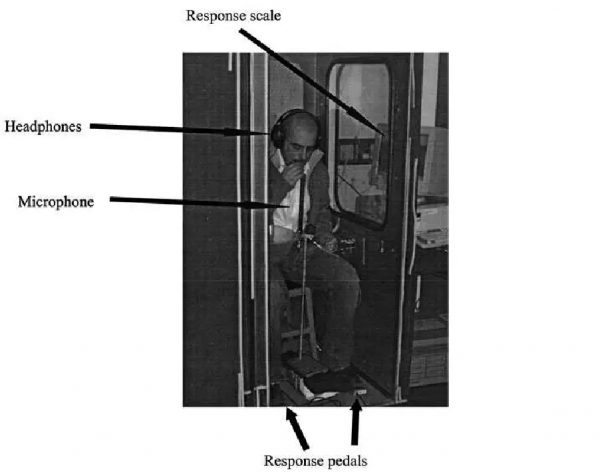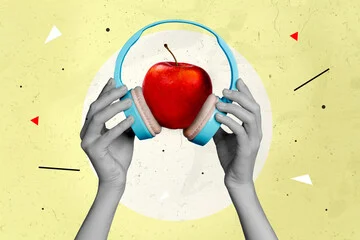Space Groceries
One nutritional challenge that astronauts have always faced on missions is the lack of fresh fruits and vegetables. ISS crew members are treated to an occasional supply, courtesy of spacecraft like the Russian Progress or Space X’s Dragon. Astronauts praise the emotional benefits of these deliveries; however, they often seem few and far between. Perishable items must be consumed within several days, making produce a sporadic delicacy.
Regarding ISS fare, astronauts frequently complain that “while the food tastes pretty similar to Earth food… it lacks a certain crunch,” and consequently seems less fresh.1 Combined with other factors that diminish the crew’s sense of taste aboard the ISS, this makes food generally blander and less appealing. But what if there were simple ways to enhance the perceived freshness of foods, increasing enjoyment? “Freshness,” as it turns out, is correlated with sound, even in non-perishable foods.

Studies on the Use of Sound to Enhance Texture
The Potato Chip Study: Zampini and Spence2
In a 2005 study, Zampini and Spence examined the effect of sound amplification on perceived freshness/crispness of potato chips.
20 participants were seated in a sound-attenuated booth and given a single potato chip. Microphones were positioned in front of their mouths, and the output was routed back to them through a pair of headphones. Subjects were told to take a single bite of the chip with their front teeth, mouths positioned in front of the microphone, and then spit it out (to maximize uniformity of the participants’ auditory experience).
After biting into the chip, they were asked to rate its subjective freshness on a computerized scale. Sounds were manipulated by both 1) overall intensity, and 2) frequency. Two-way ANOVA showed a significant increase in freshness/crispness rating when overall sound was increased, as well as at higher frequencies. Reduction of both resulted in decreased ratings in freshness.


Zampini and Spence noted that crispier foods were already known to produce both louder sounds and higher frequencies during mastication. However, this particular study was unique in that it reversed the normal cause-and-effect of chewing leading to noise. This time, the amplified noise itself directly affected the perceived texture during chewing.
On average, participants rated the noise-amplified chip samples as 15% crunchier. When interviewed afterwards, 15 out of 20 subjects speculated that the chips had come from different packages, despite uniformity among the samples.
Sound Enhancement of Pureed Diets: Endo, Ino, and Fujisaki3,4
In a series of studies from 2016 – 2020, Endo, Ino, and Fujisaki investigated the effects of modulated chewing sounds on perceptions of texture-modified diets (minced and moist, pureed, etc.). 30 elderly participants were given samples of modified foods as a control. Next, they were offered the same foods along with a headset for “pseudo-chewing sound” feedback. Chewing sounds were generated by an electromyogram (EMG).

Amplification of the chewing sound positively influenced participants’ ratings of taste, texture, and general feelings towards the food. Perceived improvement of texture for modified diets could be extremely beneficial in elderly populations requiring these modifications for safe consumption, as appetite notoriously decreases in advancing years.
Freshness in Space Food: Could these methods help?
A major concern regarding lack of fresh fruits and vegetables on long-term space missions is the lack of important phytonutrients. Functionally, these foods could provide health benefits and additional protection against the harsh, higher-radiation environment of the cosmos. If longer missions to Mars and beyond are going to be successful, new methods for growing produce on-site will have to be explored. Using sound to increase enjoyment of foods won’t change this.


On the other hand, the sound amplification techniques used in the previously mentioned studies might have emotional and even some physiological health benefits. While they won’t fix any actual nutrient deficiencies or provide the anti-oxidizing functional effects of fresh produce, they could enhance astronauts’ perception of freshness and crispness. Increased enjoyment will likely lead to higher consumption, allowing the crew to get closer to desired caloric intake, of which they usually fall short.
Feedback of chewing sounds to increase the sense of freshness and enjoyment of food may be a small but useful step in making space more palatable.
Sources
Serge, Pieters & D, Jonathan. (2020). Factors affecting flavor perception in space: Does the spacecraft environment influence food intake by astronauts?. Comprehensive Reviews in Food Science and Food Safety. 19. 10.1111/1541-4337.12633 / 2. Zampini M and Spence C. The Role of Auditory Cues in Modulating the Perceived Crispness and Staleness of Potato Chips. Journal of Sensory Studies. 19. 347 – 363. 10.1111/j.1745-459x.2004.080403.x / 3. Endo H, Ino S, and Fujisaki W. (2017). Texture-dependent effects of pseudo-chewing sound on perceived food texture and evoked feelings in response to nursing care foods. Appetite, 116, 493-501. https://doi.org/10.1016/j.appet.2017.05.051 / 4. Endo, H., Ino, S., & Fujisaki, W. (2016). The effect of a crunchy pseudo-chewing sound on perceived texture of softened foods. Physiology & Behavior, 167, 324–331. https://doi.org/10.1016/j.physbeh.2016.10.001
